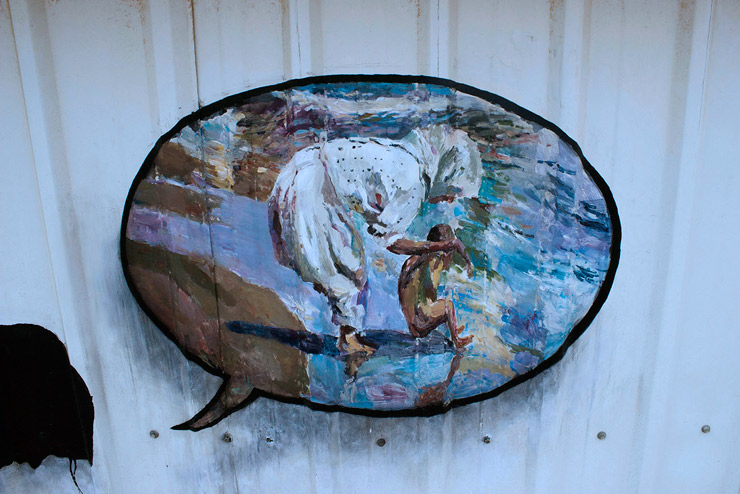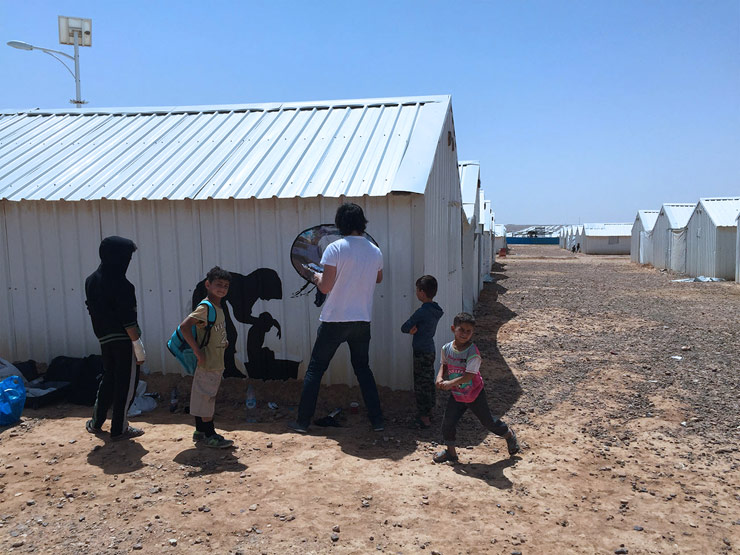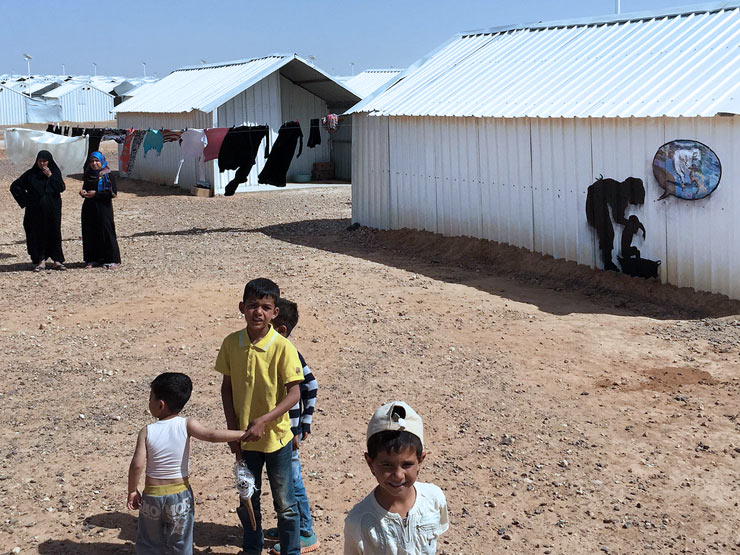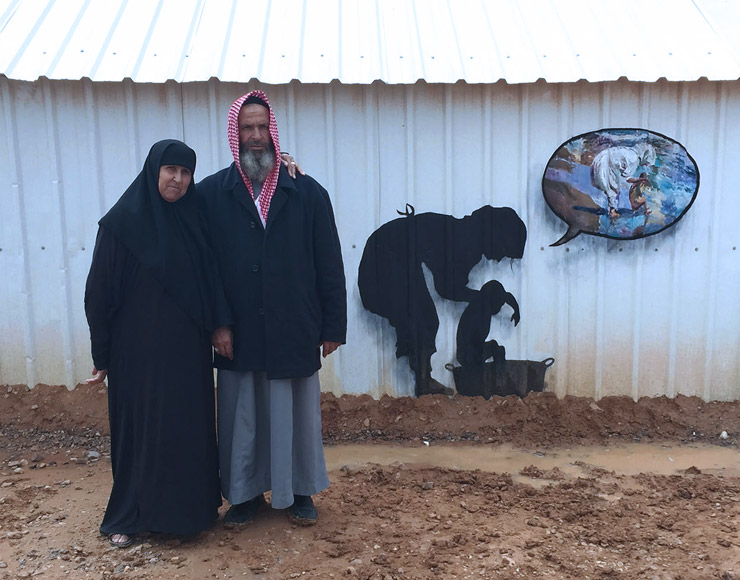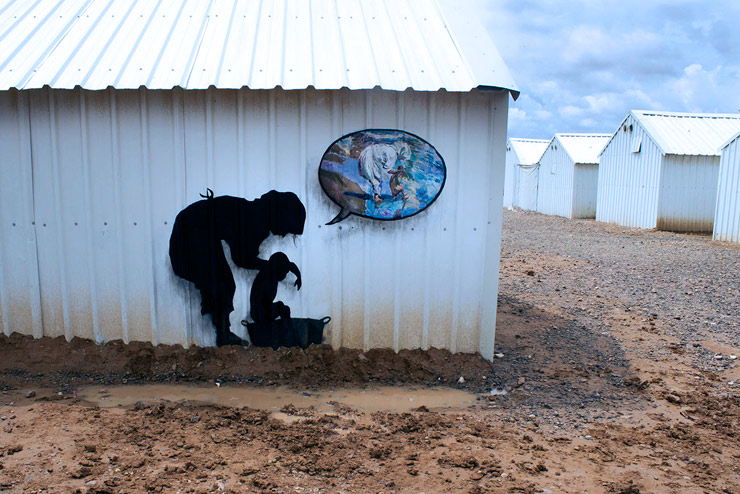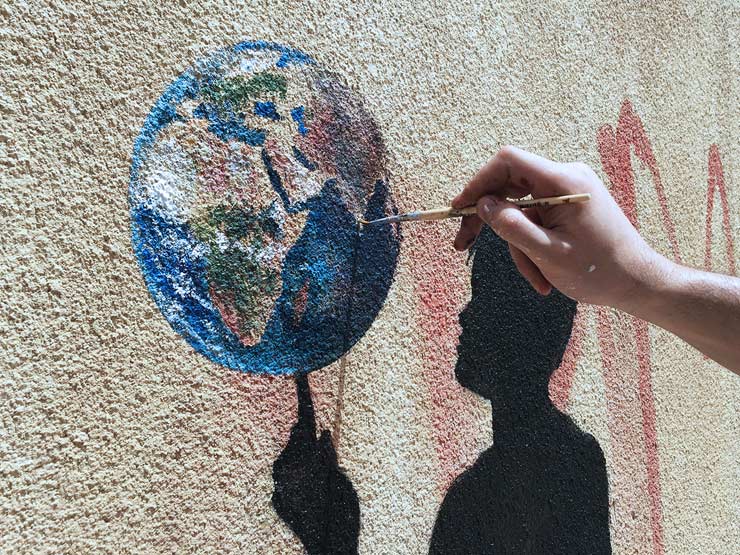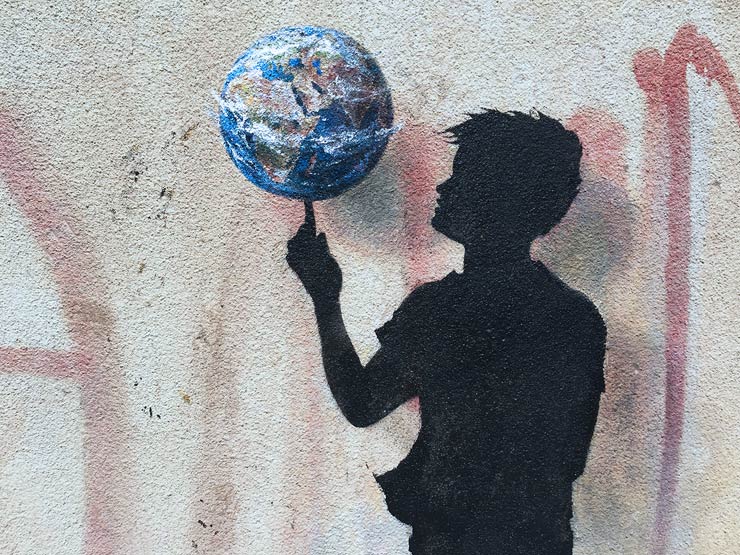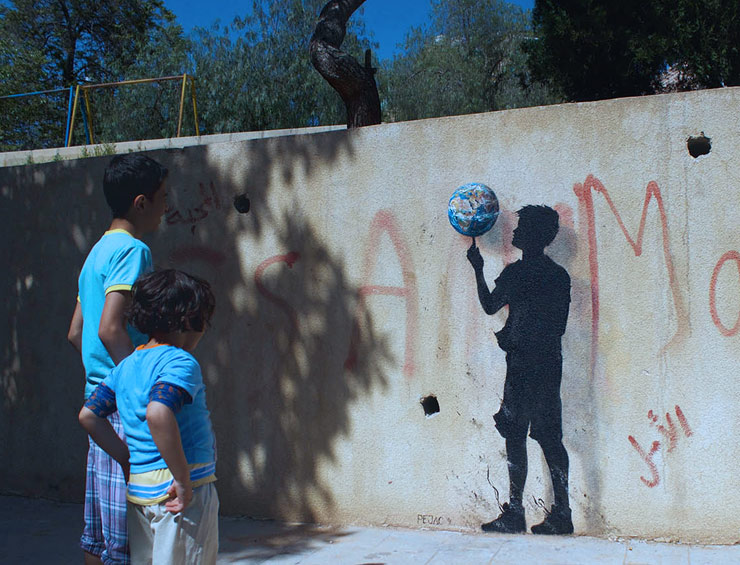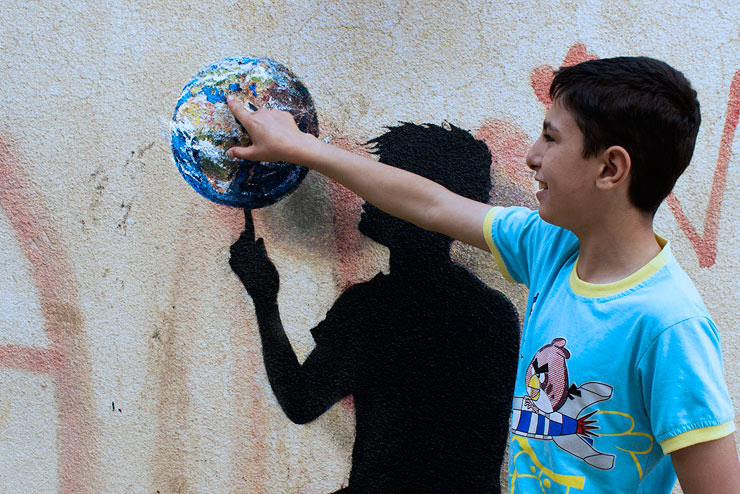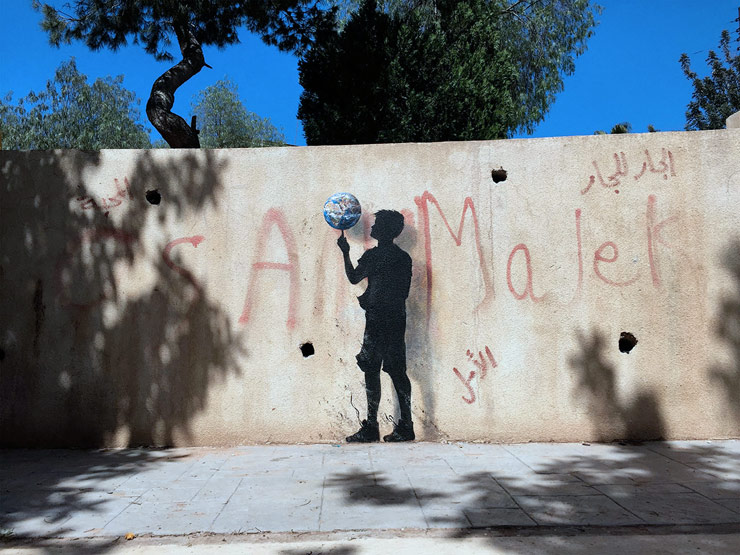Spanish Street Artist Pejac paints small intimate works in public space that are neither splashy nor enigma. Straightforward in themes, he often balances the sharp flat silhouette with the muddied impressionistic daubing of an earlier romantic period of painting. His work can lie between illusion and reality, and both can seem plausible.
Two new pieces in Jordan – one in the booming metropolis of Amman, another in the Azraq Camp for Syrian refugees an hour and a half away – speak to the status of children in the world today and tomorrow.
Pejac. “Mothers Artists” Al-Azraq Syrian refugee camp. Jordan. April 2016. (photo © Pejac)
20,338 people live in Azraq Camp right now. 56% are children. A third of them live only with their mother as the head of the family.
The long days here are monotonous, uncertain and unfamiliar as these families once had homes and jobs and lives back in Syria – Aleppo, Dar’a, Homs, rural Damascus. No one knows if they will ever resume a life like the one they had.
The military style metal shelters in the intensely hot northern desert area lack electricity, but there is enough water and food thanks to the Jordanian people and the UN Refugee Agency.
Pejac took inspiration for his work from this painting from 1908 titled Playa de Valencia a la luz de la Mañana by the Spanish painter Sorolla.
Pejac took his inspiration from the mothers here who care for their children and create entertainment and stories and fantastical games to occupy them, distracting them from their current situation. He says he recognizes the skills of artists at work “A mother’s creativity is something truly admirable – how they manage to create a special world to protect their child by transforming reality into a better place,” he says.
To symbolize the power of imagination the mother figure here is compared to one in a painting by Spanish post impressionist Sorolla in the early 1900’s Playa de Valencia a la luz de la Mañana (Valencia Beach in the morning light). Here you can see the echoed figures and the mother describing the splashing ocean to her child while bathing her/him in a basin.
Pejac. “Mothers Artists” Al-Azraq Syrian refugee camp. Jordan. April 2016. (photo © Pejac)
Pejac. “Mothers Artists” Al-Azraq Syrian refugee camp. Jordan. April 2016. (photo © Pejac)
Pejac. “Mothers Artists” Al-Azraq Syrian refugee camp. Jordan. April 2016. (photo © Pejac)
Pejac. “Mothers Artists” Al-Azraq Syrian refugee camp. Jordan. April 2016. (photo © Pejac)
Pejac. “Mothers Artists” Al-Azraq Syrian refugee camp. Jordan. April 2016. (photo © Pejac)
Elsewhere in Amman there are other new neighbors who are not in camps, living and playing alongside Jordanians. The small piece Pejac has painted next to a children’s playground is called “Rotation” and has two meanings, both of them tributes.
Pejac. “Rotation” Jabal Al Webdah, Amman. Jordan (photo © Pejac)
“On the one hand I’m talking about Jordan, a country that has a long history of hospitality towards refugees,” he explains. “Today, for example, there are over 1.6 million Syrian refugees and over 2 million Palestine refugees in Jordan.”
Secondly, the spinning globe, much like a basketball being played by kids on the court, has a fate determined by this population with a median age of 22 (compare to US 37, Germany 46). “Without knowing it,” says Pejac, “a big part of Jordan’s population and its future is being determined by, is in the hands of, the kids.”
Pejac. “Rotation” Jabal Al Webdah, Amman. Jordan (photo © Pejac)
Pejac. “Rotation” Jabal Al Webdah, Amman. Jordan (photo © Pejac)
Pejac. “Rotation” Jabal Al Webdah, Amman. Jordan (photo © Pejac)
Pejac. “Rotation” Jabal Al Webdah, Amman. Jordan (photo © Pejac)
For more information about the refugee center you can read a PDF of the Azraq Fact Sheet APRIL 2016.
BSA<<>>BSA<<>>BSA<<>>BSA<<>>BSA<<>>BSA<<>>
Please note: All content including images and text are © BrooklynStreetArt.com, unless otherwise noted. We like sharing BSA content for non-commercial purposes as long as you credit the photographer(s) and BSA, include a link to the original article URL and do not remove the photographer’s name from the .jpg file. Otherwise, please refrain from re-posting. Thanks!
BSA<<>>BSA<<>>BSA<<>>BSA<<>>BSA<<>>BSA<<>>
 BROOKLYN STREET ART LOVES YOU MORE EVERY DAY
BROOKLYN STREET ART LOVES YOU MORE EVERY DAY